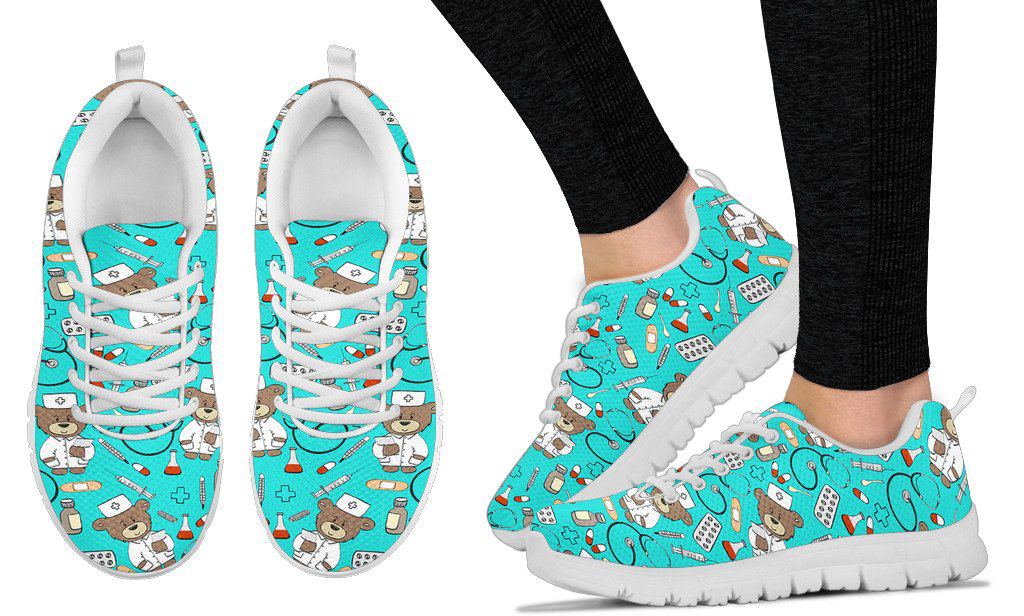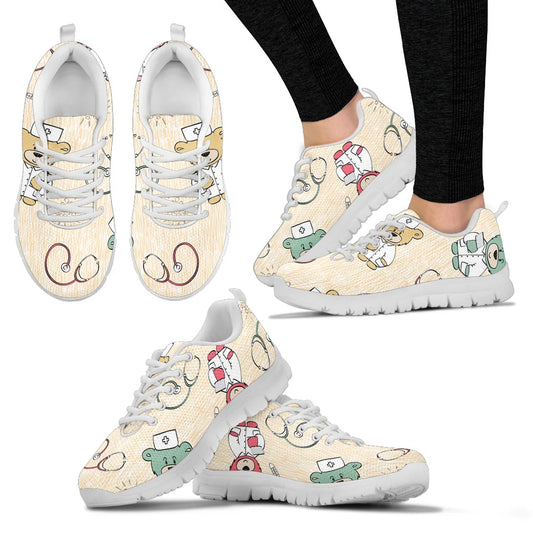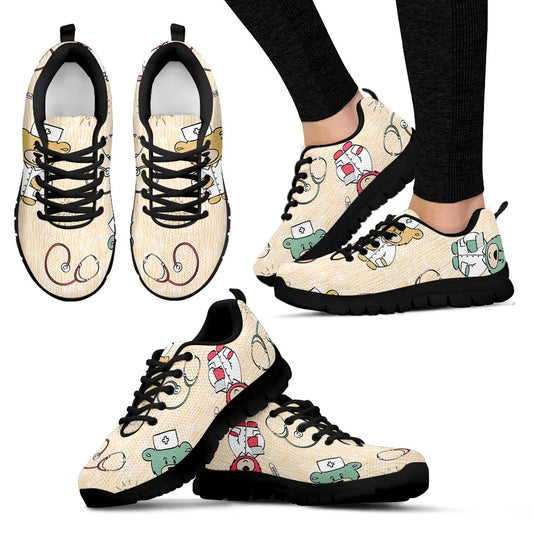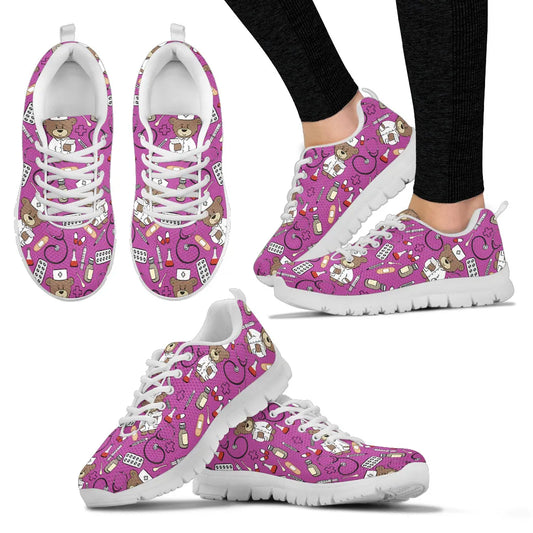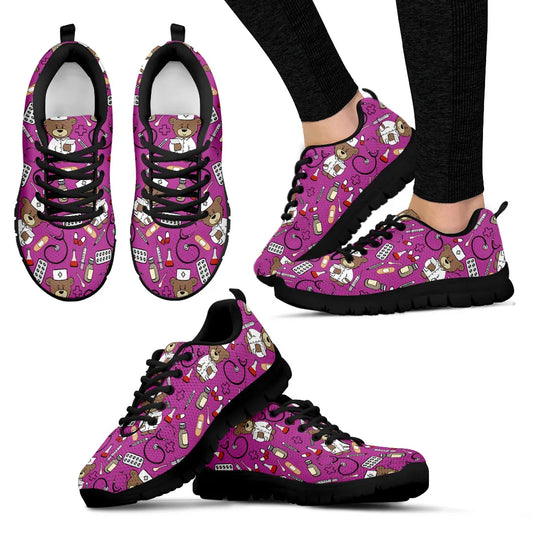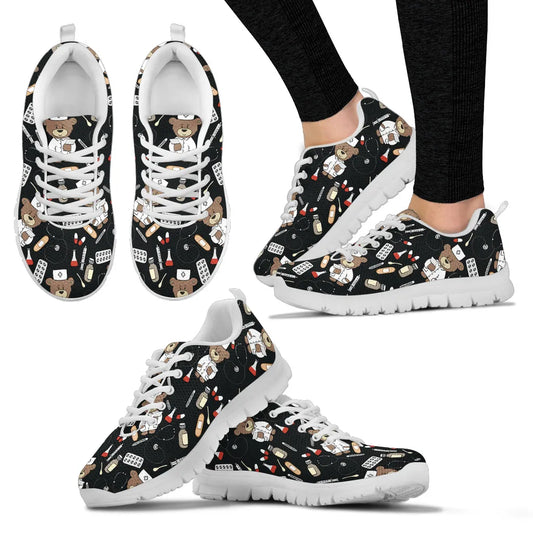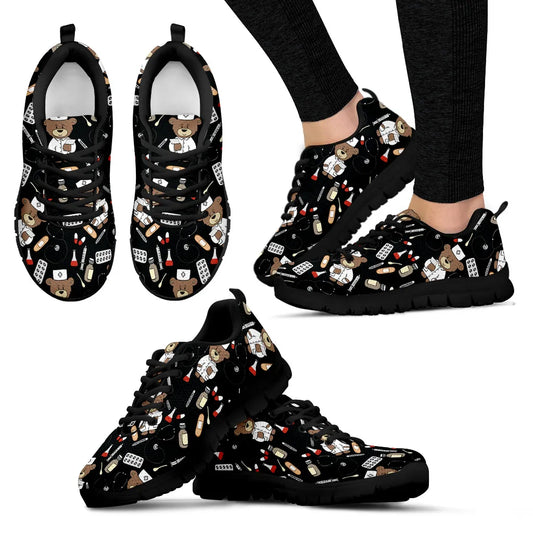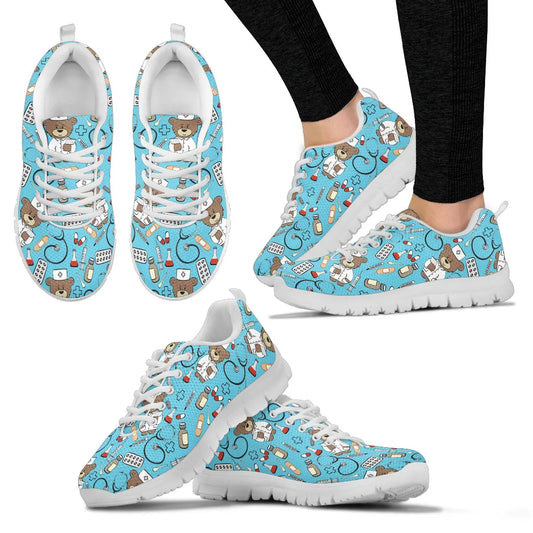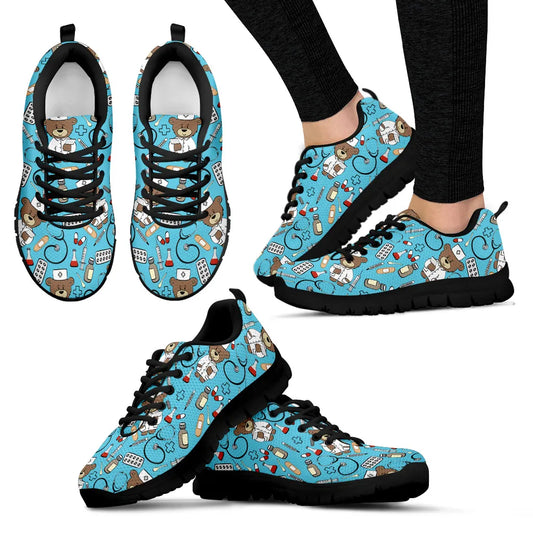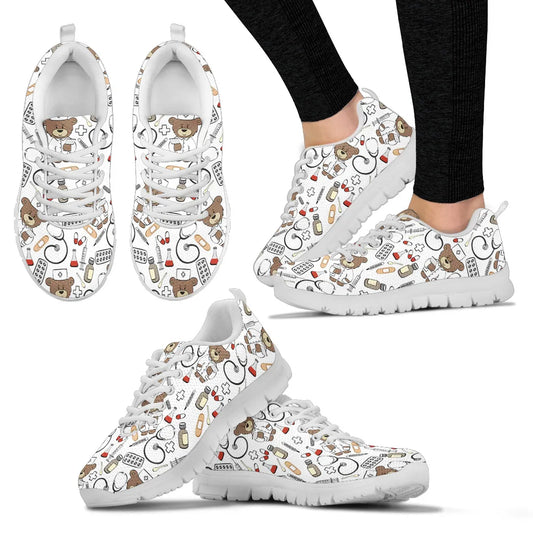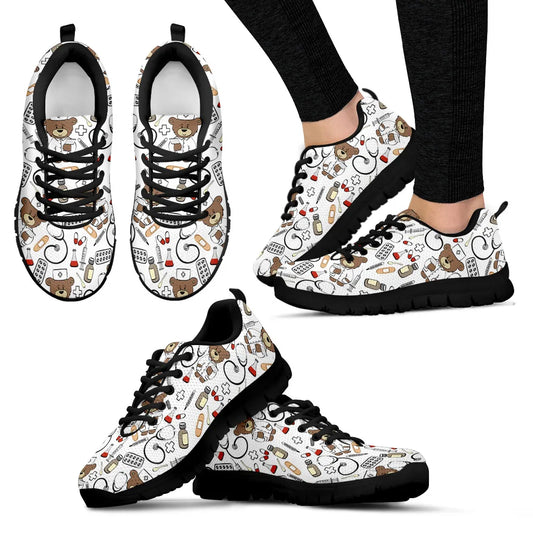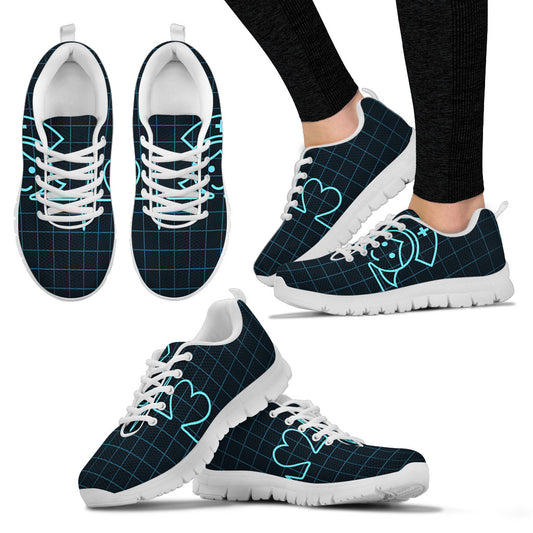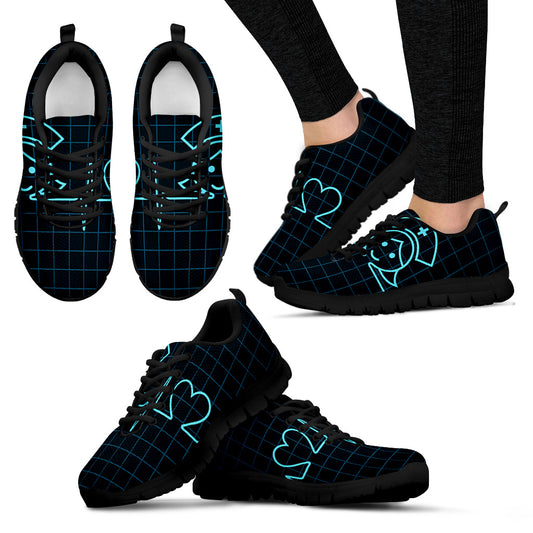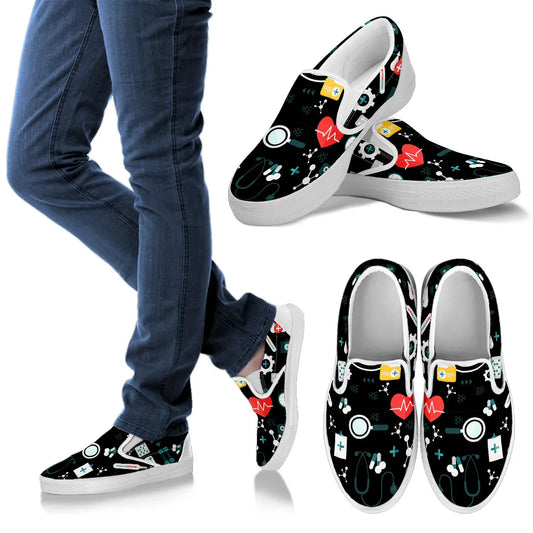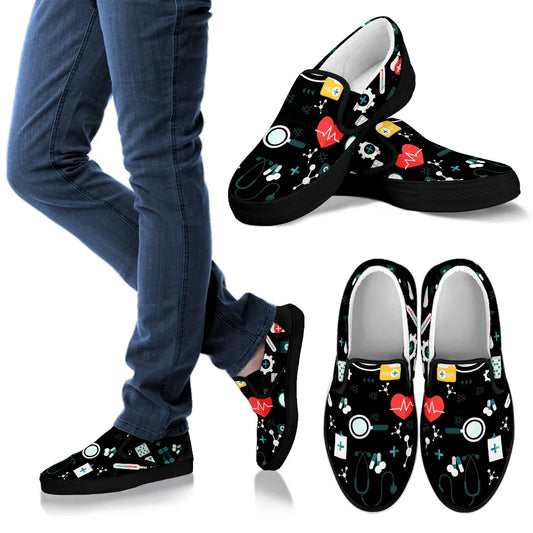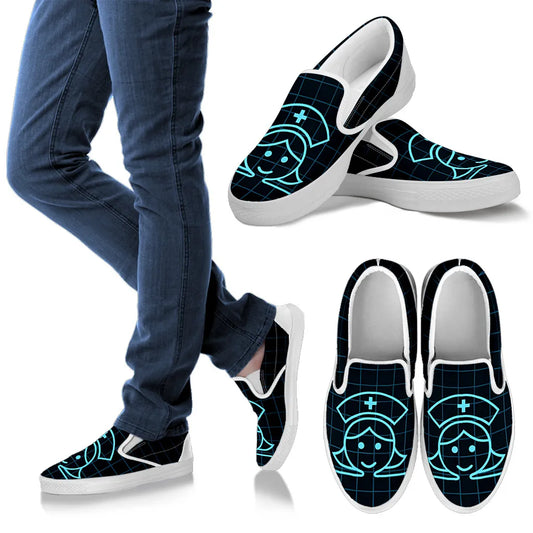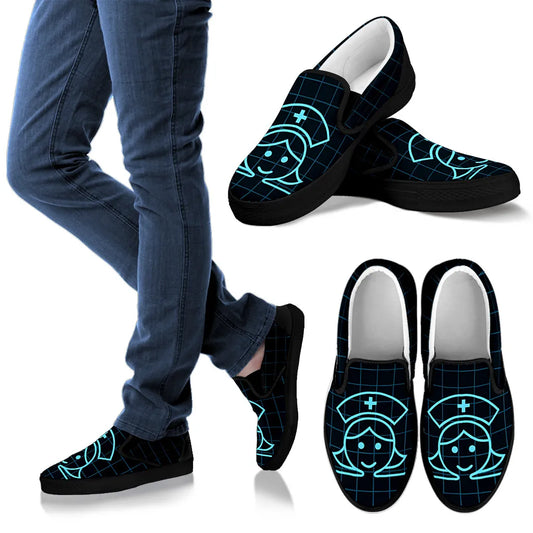Featured products
-
Bear Cream Nurse Sneakers
Regular price $59.95 USDRegular priceUnit price per$96.95 USDSale price $59.95 USDSale -
Bear Mesh Nurse Sneakers Fuchsia
Regular price $59.95 USDRegular priceUnit price per$96.95 USDSale price $59.95 USDSale -
Bear Nurse Sneakers Black
Regular price $59.95 USDRegular priceUnit price per$96.95 USDSale price $59.95 USDSale -
Bear Nurse Sneakers Light Blue
Regular price $59.95 USDRegular priceUnit price per$96.95 USDSale price $59.95 USDSale -
Bear Nurse Sneakers White
Regular price $59.95 USDRegular priceUnit price per$96.95 USDSale price $59.95 USDSale -
Black Mesh Nurse Sneakers With Picture of Nurse
Regular price $69.95 USDSale price $69.95 USDUnit price perSale -
Black Nurse Slip On Sneakers
Regular price $69.95 USDRegular priceUnit price per$89.95 USDSale price $69.95 USDSale -
Black Nurse Slip On Sneakers (Smiling Nurse)
Regular price $69.95 USDRegular priceUnit price per$89.95 USDSale price $69.95 USDSale
GUIDE TO SELECTING AND WEARING NURSE SHOES
Nurses work long hours on their feet, and know the importance of choosing good sneakers or shoes. The wrong choice of footwear can lead to pain and worsen existing problems. This guide will not only provide the tips on selecting the proper shoes and show different types of nursing footwear, but also how wear and maintain your shoes to get the most out of them.
SIX CRITERIA WHEN CHOOSING NURSE SNEAKERS OR SHOES
Finding the Right Fit
You shoes should fit snuggly, they shouldn’t be too loose or tight. It they are too tight at the heel or toe it can result in chaffing and blisters. However, if they are too loose it can result in reduce traction and slipping.
The Right Shoes Require Minimum Breaking-In
The right shoes do not require a long break-in period. If they don’t feel comfortable after 3-4 days, we suggest either replacing them, or follow these tips on how to break-in shoes without the pain of wearing them for weeks. .The Importance Of No Slip Soles
Rubber-soled shoes with good treads are a must, since, hospitals floor often fall victim to bodily fluids, and can get slippery, a fall is dangerous both you, your colleagues and patients.Arch Support or Padded Instep
The sole is the most important part of the shoe. If the sole isn’t supported, you won’t last a long shift. A shoe with a padded sole absorb shocks and decrease ankle, knee and hip pain.Arch support or a padded instep is vital if you have problems like plantar fasciitis or just flat feet. Flat feet can benefit from greater arch support, and the degree of arch support depends on the height of your arches. This helps to put the foot in a more neutral position to cancel out the shock of impact. However, people shouldn’t spend a lot of money on custom orthopedics.
Look for a Wide Toe Box
Buy a shoes with a wide toe box, and don’t buy smaller size shoe, a shoe that might feel comfortable at the store might not after a long shift.Rocker Bottom
For people who have ankle arthritis should think about getting shoes with rocker bottom soles. Rocker Bottom has a thicker sole where toe and heel areas curve upward. This reduces the pressure o the ball and heel

Mesh or Canvas?
The advantage of sneakers with mesh is they are breathable and light. However they are hard to clean. If you work in specialties or situations where you don’t come in contact with a messy bodily fluids, they might be OK; however, for most nurses this might be a good option.In contrast, canvas sneakers are easy to clean, and can be cleaned by wiping down with antibacterial solution. Depending on the style, you can wear for patient care and for meetings. The downside is they are a little heavier than mesh sneakers.
FIVE DIFFERENT TYPES OF NURSING FOOTWEAR
Hi Tops
Wearing Hi Tops is really a matter of style and preference. There hasn’t been any studies done on Hi-Tops and the medical profession. However, there have been many studies done on athletes wearing Hi Tops. In a 2001 Australian study they looked at over 10,000 basketball, and found no difference in the level of injury for low and high top wearersSneakers
They are needed in high paced areas where people are on their feet like Emergency Room (ER), where nurses are always on the move. Sneaker are built for running and have grips so you don’t slip. Canvas sneakers are ideal, since they also protect you from bodily fluids.Slip Ons
Slips Ons are the type of nurse shoes that one can get in and out of quickly. This is critical in operating theaters, where no external footwear is allowed, this means that nurses have to change his/her footwear every time she enters and exits the Operation theater. more practical here.Clogs
Clogs are also a popular choice. They are comfortable, and the front is enclosed, protecting you from spills. The back of the clog isn’t close, and they can function like slip-ons. The back strap makes them secure. Hence, they are ideal for the operating room.

The back of the shoe is open and hence the clog can function as a slip on shoe too. This makes it great for use in the operation theaters. They have a strap at the back which makes them even more secure
Boots
If you are working in an environment with a lot of bodily fluids, sometimes even canvas sneakers aren’t enough, and you need the protect only boots can provide We offer a selection of normal and ankle boots that are great as a permanent replacement for your nurse sneakers, or to be worn for a particularly messy situationSIX TIPS ON WEARING AND MAINTAINING MG NURSING SHOES OR SNEAKERS
Don’t Forget About Socks
Just as selecting the right footwear is important for your feet, picking the right socks to go with them are just as vital. Socks that absorb moisture and breathable, cut down on odors and prevent your swear from becoming too sweaty. Nurses should wear compression socks to increase circulation and lower soreness during the typical 12 hour shift.
Have Different Types and Alternative Footwear
You should have different types of footwear, especially if you work in different environments, You should have set of footwear for formal occasions, one for everyday use where you are walking/running all the time and another set for operating theater or where you are standing in one position for a long time. We suggest plain color canvas shoes for the formal occasions, mesh/canvas sneakers / hi-tops for everyday use and clogs/slips on for operating theater.Secondly, you should buy two pairs of each footwear. Particularly for canvas sneakers, they need a break so they don’t trap odors over time. When you spend long hours on your feet, your feet can get sweat, and developed odors and on rare occasions athlete’s foot. Canvas wears down quickly if it doesn’t have time to dry out. You should alternate pairs of shoes so that they have a chance to dry out on their off-days.

